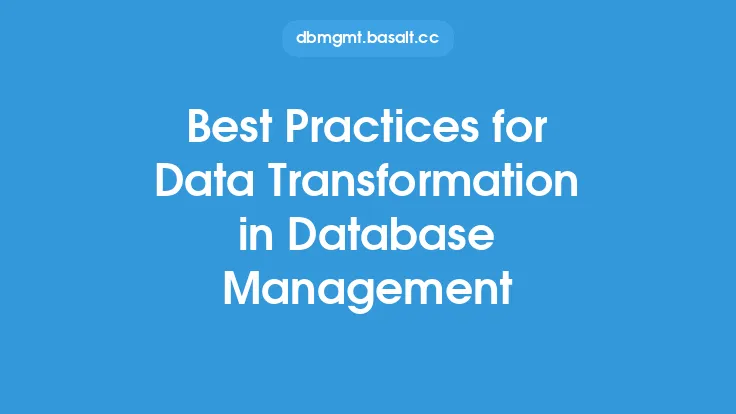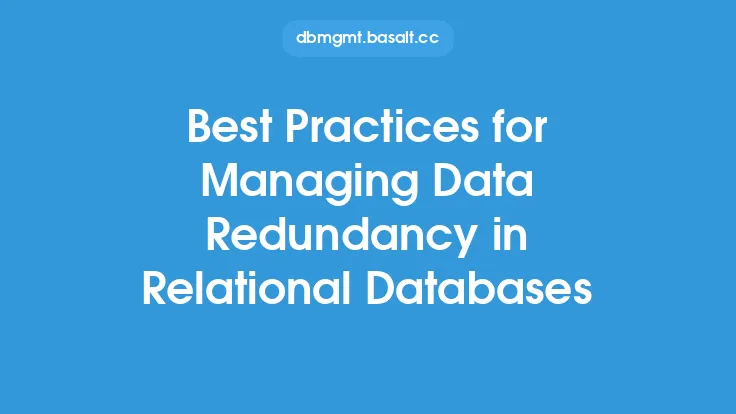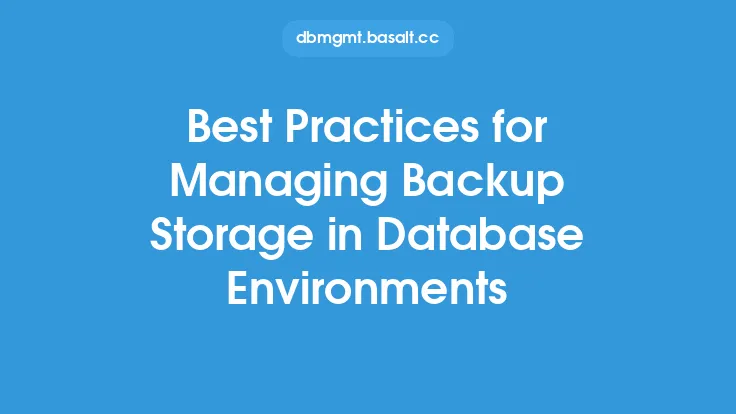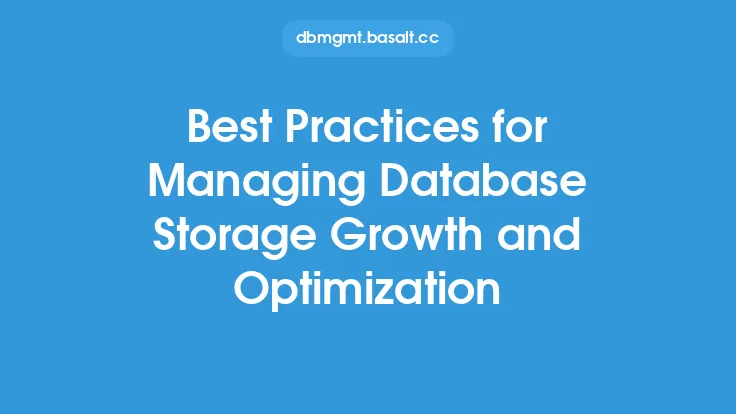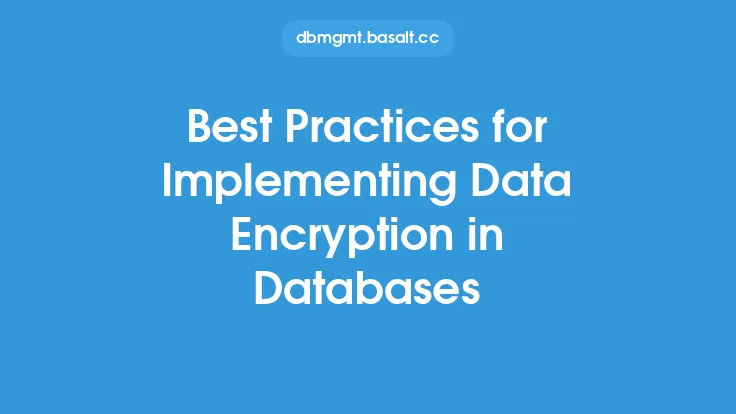Database administration involves a wide range of tasks aimed at ensuring the optimal performance, security, and reliability of databases. One critical aspect of database performance optimization is cache management. Cache management refers to the process of controlling and optimizing the cache, which is a small, fast memory that stores frequently accessed data. Effective cache management is essential for improving database performance, reducing latency, and increasing throughput. In this article, we will discuss the best practices for cache management in database administration.
Introduction to Cache Management
Cache management is a critical component of database administration, as it directly impacts the performance and responsiveness of the database. The cache acts as a buffer between the main memory and the disk storage, providing quick access to frequently accessed data. By managing the cache effectively, database administrators can reduce the number of disk I/O operations, minimize latency, and improve overall system performance. Cache management involves a range of tasks, including cache sizing, cache placement, cache replacement, and cache invalidation.
Cache Sizing and Configuration
Cache sizing and configuration are critical aspects of cache management. The cache size should be optimized to ensure that it can store a sufficient amount of data to meet the needs of the application. A cache that is too small may not be effective in reducing disk I/O operations, while a cache that is too large may waste memory and increase the risk of cache thrashing. Database administrators should monitor cache performance and adjust the cache size as needed to ensure optimal performance. Additionally, the cache configuration should be optimized to ensure that the cache is properly aligned with the underlying storage system.
Cache Monitoring and Maintenance
Cache monitoring and maintenance are essential for ensuring that the cache is operating effectively. Database administrators should regularly monitor cache performance, including metrics such as cache hit ratio, cache miss ratio, and cache thrashing. By monitoring these metrics, administrators can identify potential issues and take corrective action to optimize cache performance. Additionally, administrators should perform regular cache maintenance tasks, such as cleaning up unused cache entries and updating cache statistics.
Cache Placement and Organization
Cache placement and organization are critical aspects of cache management. The cache should be placed in a location that minimizes latency and maximizes throughput. This may involve placing the cache on a separate disk or storage system, or using a cache hierarchy to optimize cache performance. Additionally, the cache should be organized to ensure that frequently accessed data is stored in the cache, while less frequently accessed data is stored on disk. Database administrators can use techniques such as cache partitioning and cache indexing to optimize cache organization.
Cache Invalidation and Refresh
Cache invalidation and refresh are critical aspects of cache management. Cache invalidation involves removing outdated or invalid data from the cache, while cache refresh involves updating the cache with new data. Database administrators should implement a cache invalidation strategy that ensures that the cache is updated regularly, while minimizing the impact on system performance. Additionally, administrators should implement a cache refresh strategy that ensures that the cache is updated with new data in a timely and efficient manner.
Best Practices for Cache Management
To ensure effective cache management, database administrators should follow a range of best practices. These include:
- Monitoring cache performance regularly to identify potential issues
- Optimizing cache size and configuration to ensure optimal performance
- Implementing a cache invalidation strategy to ensure that the cache is updated regularly
- Implementing a cache refresh strategy to ensure that the cache is updated with new data in a timely and efficient manner
- Using cache partitioning and cache indexing to optimize cache organization
- Placing the cache in a location that minimizes latency and maximizes throughput
- Using a cache hierarchy to optimize cache performance
Conclusion
In conclusion, cache management is a critical aspect of database administration, and effective cache management is essential for improving database performance, reducing latency, and increasing throughput. By following the best practices outlined in this article, database administrators can ensure that their cache is operating effectively, and that their database is performing at its best. Whether you are a seasoned database administrator or just starting out, understanding the principles of cache management and implementing effective cache management strategies is essential for ensuring the optimal performance and reliability of your database.
